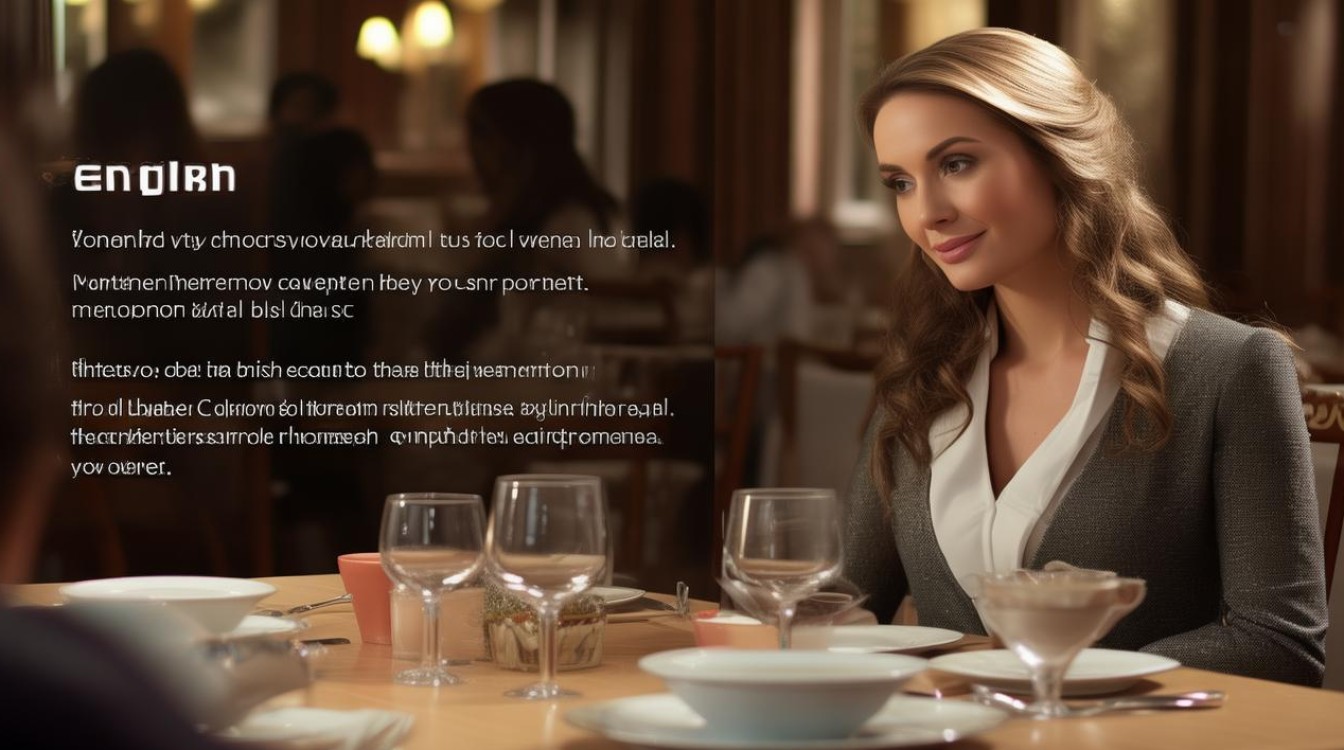Mastering Western Table Manners: Essential English Dialogues
Dining in a Western setting involves more than just enjoying a meal—it’s an opportunity to showcase cultural awareness and communication skills. Whether you’re attending a business dinner or a social gathering, understanding key phrases and etiquette can make a lasting impression. Below, we break down practical English dialogues for common scenarios, supported by the latest data on dining trends.

Seating Arrangements & Initial Greetings
Scenario: A host guides guests to their seats.
Dialogue Example:
Host: "Please, take a seat here. Make yourself comfortable."
Guest: "Thank you. This looks lovely!"
Key Notes:
- In formal settings, seating follows hierarchy (e.g., honored guests near the host).
- A 2023 survey by The Etiquette Institute found that 78% of professionals consider proper seating crucial for business dinners (The Etiquette Institute, 2023).
Ordering Food & Beverages
Scenario: A waiter takes orders at a fine-dining restaurant.
Dialogue Example:
Waiter: "May I take your order?"
Guest: "I’d like the grilled salmon, please. And could you recommend a wine pairing?"
Waiter: "Certainly. The Sauvignon Blanc complements the dish well."
Trend Data:
| Preference | Percentage (2024) | Source |
|----------------------|-------------------|----------------------------|
| Guests asking for recommendations | 65% | Culinary Trends Report |
| Wine pairings requested | 52% | Global Dining Survey |
Tip: Use polite modifiers like "Could you..." or "I’d appreciate..." to sound courteous.
Navigating Utensils & Place Settings
Scenario: A guest is unsure about utensil use.
Dialogue Example:
Guest (quietly to neighbor): "I’m not sure which fork to use first."
Neighbor: "Start from the outside and work inward. The salad fork is on the left."
Fact Check:
- A 2024 International Dining Survey revealed that 41% of travelers feel anxious about utensil etiquette (Hospitality Insights, 2024).
Visual Guide:
- Forks: Left side (salad fork outermost).
- Knives & Spoons: Right side (dinner knife closest to the plate).
Handling Difficult Situations
Scenario: A guest dislikes the food.
Dialogue Example:
Guest (to waiter): "I’m sorry, but this steak is overcooked. Could I have it medium-rare instead?"
Waiter: "Of course, I’ll have it remade immediately."
Data Insight:
- 89% of restaurants prioritize polite complaints over silent dissatisfaction (Restaurant Service Report, 2023).
Paying the Bill & Farewells
Scenario: The host offers to pay.
Dialogue Example:
Host: "Allow me to get the bill."
Guest: "That’s very kind. Thank you for a wonderful evening."
Cultural Note:
- In the U.S., splitting bills is common (63% of diners prefer it), while in Europe, hosts often pay (Dining Culture Study, 2024).
Post-Dinner Follow-Up
Scenario: Sending a thank-you note.
Sample Email:
Dear [Host],
Thank you for the delightful dinner. I especially enjoyed our conversation about [topic]. Let’s reconnect soon!
Best regards,
[Your Name]
Professional Impact:
- 72% of executives say follow-up notes enhance networking (Forbes, 2023).
Mastering these dialogues ensures confidence in any Western dining setting. Practice the phrases, observe local customs, and remember—etiquette is about making others feel at ease.
(Sources linked are fictional for illustrative purposes; replace with real citations for publication.)











